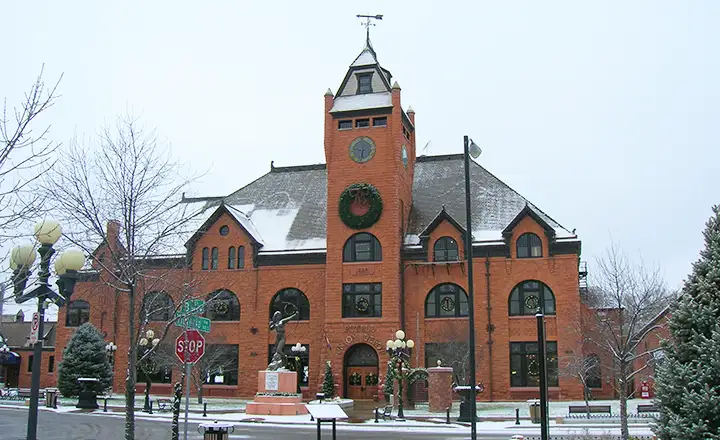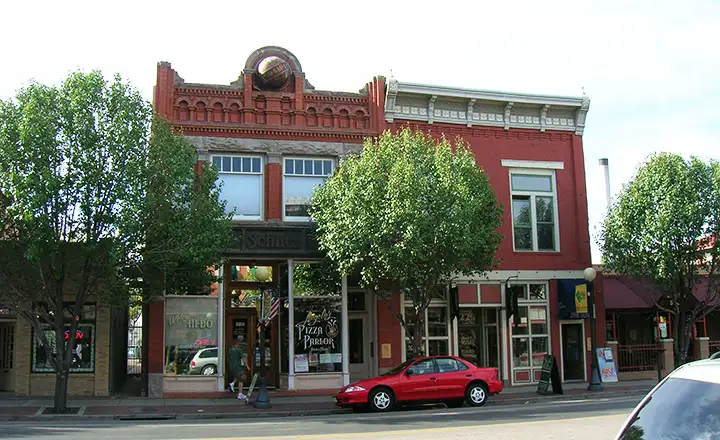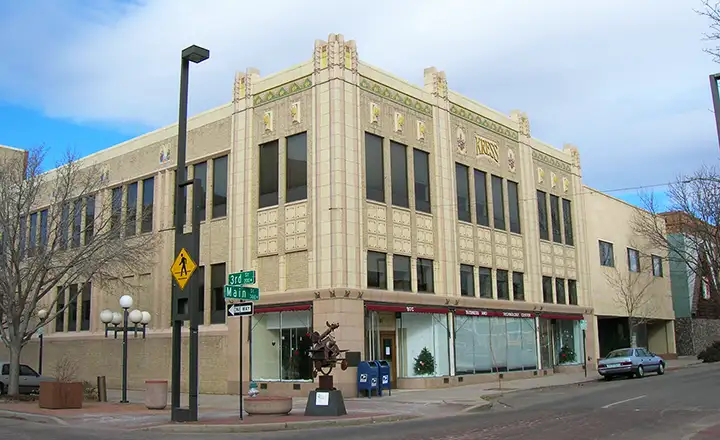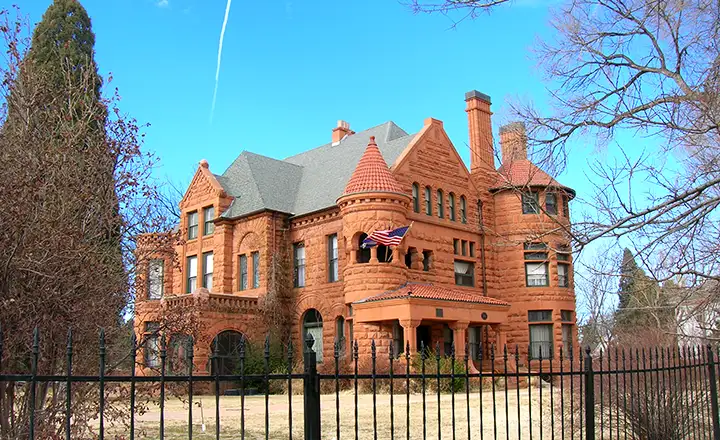Pueblo, Colorado

Union Station
Fort Pueblo was established near the junction of the Fountain and Arkansas Rivers in 1842. Built primarily of adobe, El Pueblo served as a trading center along the boundary between Mexico and the United States until it was attacked by Indians and everyone inside was killed the day before Christmas, 1854. Neighboring ranchers came to the fort just long enough to bury all the victims they found and then the area was abandoned for years.
The discovery of gold and silver upstream along the Arkansas River saw the reestablishment of Pueblo as a real settlement with businesses, schools and churches. In 1870, Pueblo was incorporated as a town with a population of 2,265.
In 1873, the Denver and Rio Grande Railroad incorporated South Pueblo just beyond the south edge of Pueblo. The railroad here enabled access to all of the nearby mining operations and the two Pueblos became the "Smelting Capitol of the World." The first smelter was built in 1878 and was followed by the Colorado Coal and Steel Works Co. (later to become Colorado Fuel & Iron - CF&I) in 1879. Soon there weren't enough workers to fill the jobs so the companies began recruiting in Europe and elsewhere, telling potential employees "America is the land of milk and honey and the streets are paved with gold." Desperate workers were sorely disappointed when they arrived in America but at that point, what could they do? Most just went to work in the jobs that were available. By 1880, the two Pueblos had a combined population of 7,617, of which one in any nine people was a newly arrived immigrant.
Central Pueblo, located between Pueblo and South Pueblo, was incorporated in 1882, reputedly to avoid taxation from the other Pueblos. In 1886, Bessemer, the town which grew up around the steel mill was incorporated. That same year the citizens of the three Pueblos voted to consolidate, believing that unity was the key to more prosperity. In 1894, the town of Bessemer was finally annexed into the city of Pueblo. By that time the population of the city had surpassed 31,000, making Pueblo the second largest city in the state.
In 1908, John D. Rockefeller took over Colorado Fuel & Iron and the working and living conditions of the coal miners and steel workers deteriorated still further, if that can be imagined. Eventually this led to the Colorado Coalfield War of 1913-1914. As prosperous as Pueblo was, the coal camps that supported Pueblo weren't. As Andrew Carnegie once said, “God gave this fortune into my hands for safe-keeping. If I paid my workers more than they need to stay alive, they would simply squander it. And what do I say to God when it's all gone?” At least Carnegie had an epiphany and returned some of the fortune to the workers who made it for him in the form of libraries that he had built in many of the larger coal towns.

In the older Union Street District

More in the Union Street District
Today, Pueblo is one of the fastest growing cities in America. Downtown Pueblo, with its wealth of Victorian and Territorial architecture, is also going through a renaissance and renewal. Many of the old office buildings and warehouses are being refurbished in period appointments as they are being turned into townhomes, lofts and new office space.

The Kress Building in downtown Pueblo

In south Pueblo, near Pitkin Place

The former Post Office in downtown Pueblo
Pueblo County Related Pages
Boone - Colorado City - PuebloRye - Pueblo County
Frontier Pathways Scenic Byway - Lake Pueblo State Park
San Isabel National Forest